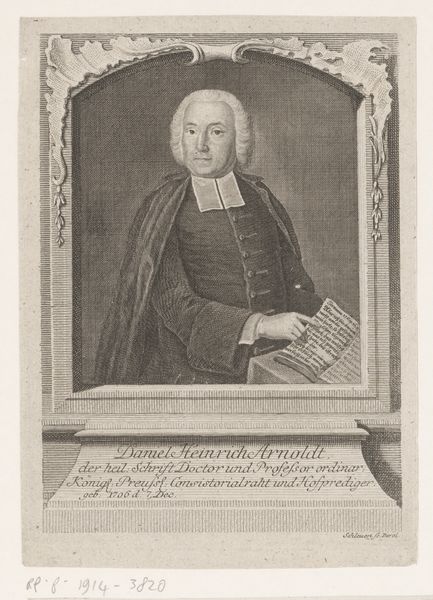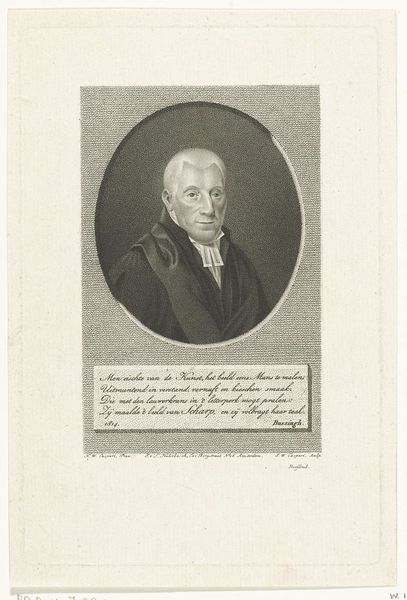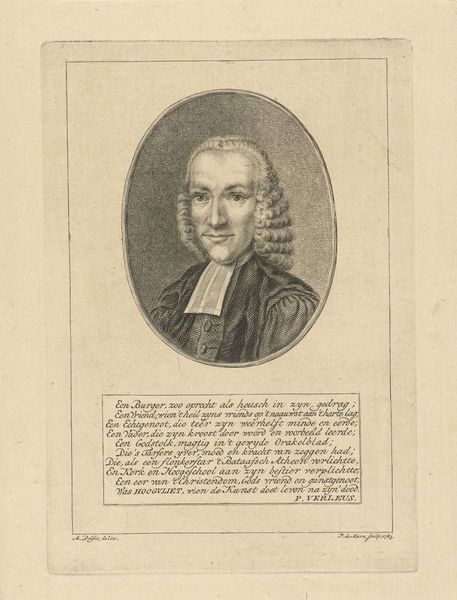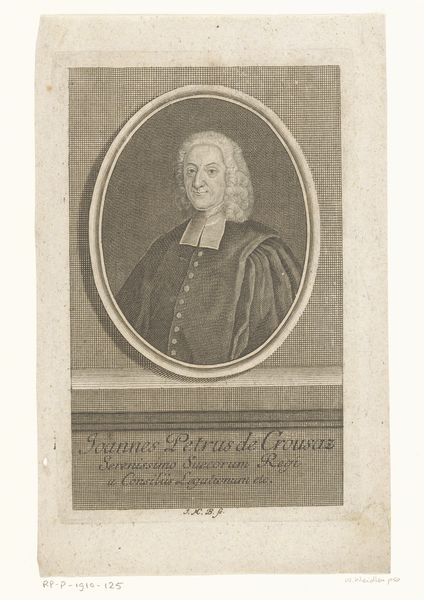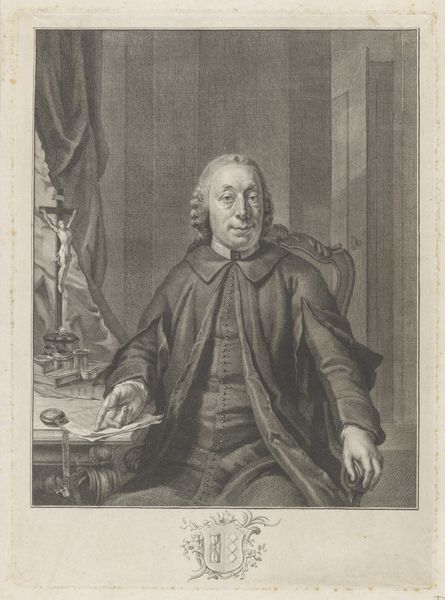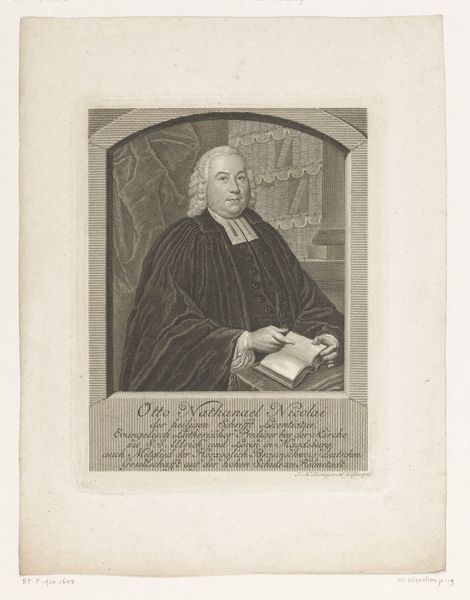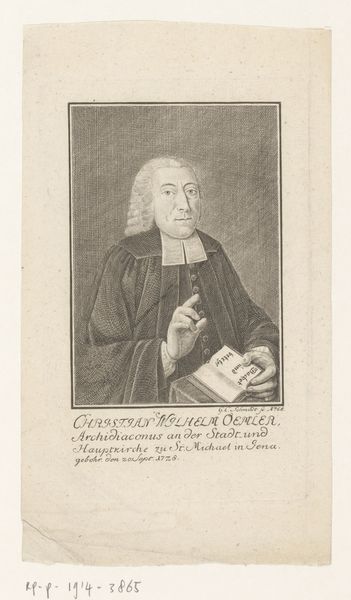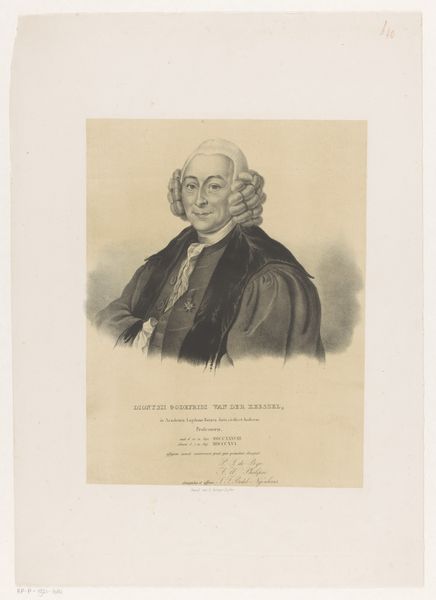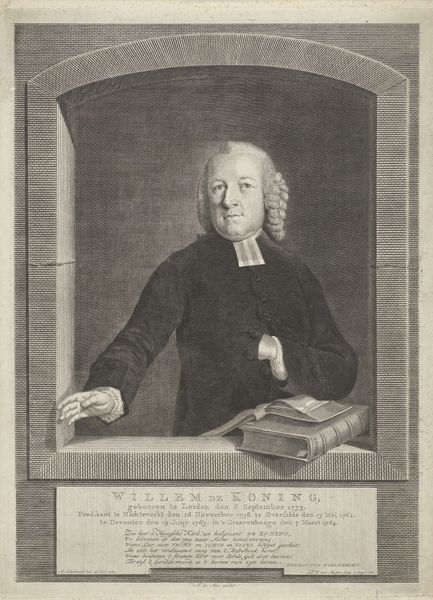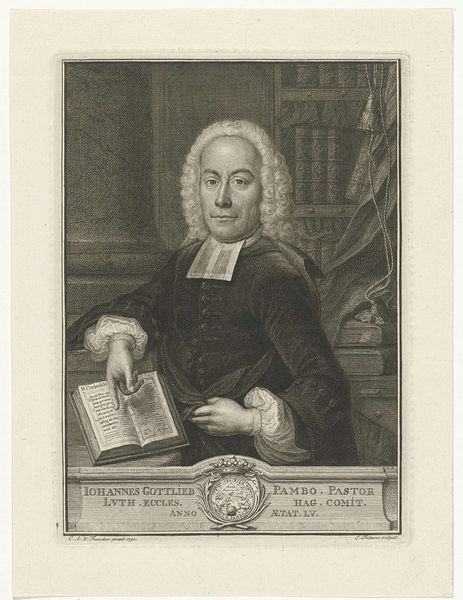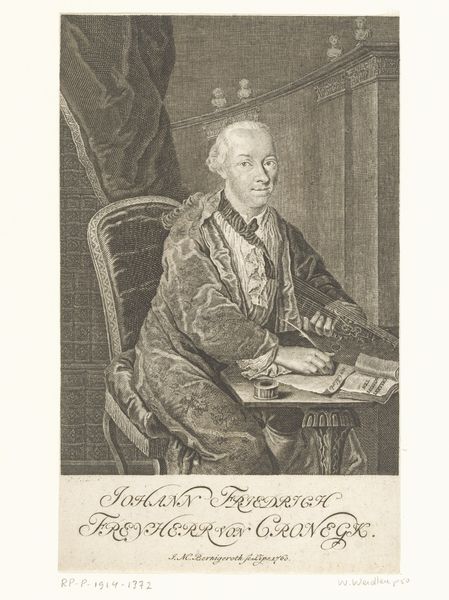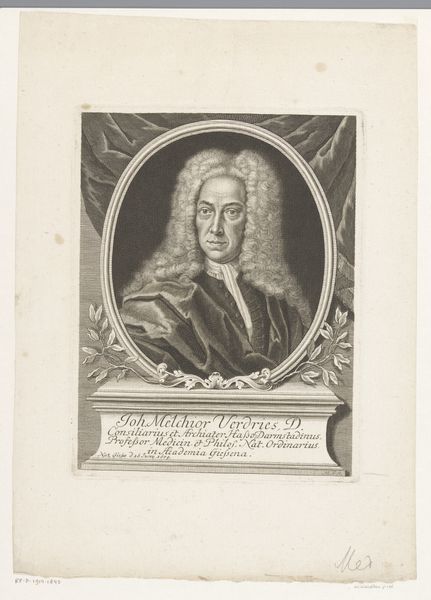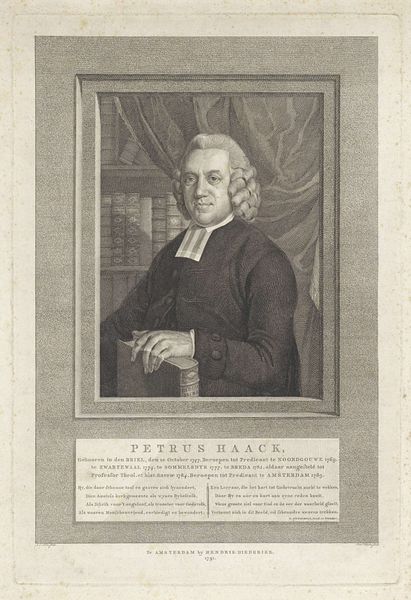
graphic-art, engraving
#
portrait
#
graphic-art
#
baroque
#
old engraving style
#
line
#
history-painting
#
engraving
Dimensions: height 165 mm, width 89 mm
Copyright: Rijks Museum: Open Domain
Curator: Here we have Johann Martin Bernigeroth's "Portret van Christian August Crusius," an engraving dating back to 1747, currently residing here at the Rijksmuseum. Editor: Immediately, I’m struck by the intense formality and slight reserve emanating from the portrait, and also from the technique of engraving itself; everything feels precise and calculated, reflecting the intellectual environment it depicts. Curator: Precisely. Bernigeroth's meticulous technique in engraving—those intricate lines—really emphasize the texture of the paper, and capture the fine details of Crusius’s garments and the books in the background. How do you think these material choices speak to the portrait’s function? Editor: Absolutely! Bernigeroth, like other artists in his time, used engraving as a mode of reproduction and dissemination. This ensures his sitter is not just depicted but *presented* in a particular socio-political milieu—where intellectual prowess and philosophical pursuits are signifiers of social rank. We can't separate the mode of production from the context. Curator: I completely agree. Think of the skilled labor involved in creating the printing plates, then reproducing multiple copies to distribute to intellectual circles. The print acts as a crucial form of visual communication during the Enlightenment era. Editor: Also, consider Crusius himself, as a public figure. His profession and reputation shaped how Bernigeroth crafted this image. It raises questions about power, patronage, and how people navigated their identities within complex systems. The carefully rendered lines could represent his intellectual achievements or even signal virtue, perpetuating and even constructing his public persona. Curator: Very true! By reproducing the philosopher's image, Bernigeroth participated in shaping his legacy for generations to come. And that specific visual language becomes standardized within academic culture, linking portraiture to philosophical and academic accomplishment. Editor: Looking beyond the subject, Bernigeroth's technical skill intersects with larger questions concerning visual representation, labor practices within artistic production, and power relations embedded within the act of portrayal. Curator: Exactly! It brings new meaning to an old way of image reproduction—an art of both production and intellectual propagation. Editor: And a testament to how even a seemingly simple portrait can reveal complex social and intellectual relationships when we situate it within a rich and evolving culture.
Comments
No comments
Be the first to comment and join the conversation on the ultimate creative platform.
